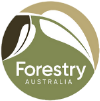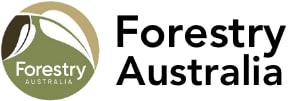
Opinion Piece: Forestry has vital role to play in tackling climate change
This opinion piece was published in The Mercury
Tasmania’s status as the only Australian state to achieve negative carbon emissions in 2020 is an amazing achievement and one that should be celebrated. However, there is more to the story than what you might have read in recent news.
Tasmania’s carbon-negative position has been promoted by some as being a result of reductions in native forest timber harvesting that have occurred since 2011. However, it’s more complex than this simplistic narrative. Look a bit closer and you will find that harvesting and regrowing of forests has actually contributed to reaching this celebrated milestone.
This is because growing trees absorb carbon from the atmosphere. When the carbon being absorbed by young trees is more than the carbon emitted by harvesting, the forest becomes ‘carbon-negative’.
In Tasmania, this effect has gone one step further, as the trees regrowing after harvesting are not just absorbing more carbon than is emitted from harvesting trees, but they are absorbing more carbon than the entire state emits. To put it simply, if past timber harvesting had never occurred and new trees regrown, Tasmania’s carbon-negative position would not have been achieved.
However, in non-forest sectors of Tasmania, emissions have increased over the past 10 years. For now, these increased emissions are being offset by the growing trees in the forest sector. But, with a decline in timber harvesting, this offset will only provide a temporary respite – carbon absorption rates decline as forests age, meaning that unless there are heavy emission reductions in other sectors, Tasmania will struggle to maintain its carbon-negative position into the future.
Forestry is the science and craft of creating, managing, conserving, using and caring for forests. It is an important tool for managing forest carbon and is one of the only sectors that can absorb more carbon than it emits. With young trees absorbing more carbon and old trees storing more carbon, a diverse multi-age managed forest provides a holistic solution to climate change.
Ethical and sustainable forestry continues to adapt to societal values, ecological needs and to climate change and, in this way, is pulling its weight on climate action. Sacrificing a sustainable forestry sector while emissions are still increasing in other sectors is not a genuine climate action, nor is it a long-term climate change solution.
Tackling climate change is one of the biggest challenges of our generation. Reducing or excluding Australia’s capacity to conduct forest management will have major unintended consequences for carbon and our forests, including limiting our ability to combat climate change, mitigate bushfires and restore forest landscapes.
It will also lead to greater reliance on imports and alternatives with high carbon footprints, such as concrete and steel, as local, sustainable forest products become less available
Australia has a global responsibility to tackle climate change and forestry has a significant role to play in this response.
Dr Michelle Freeman
Vice President, Forestry Australia

